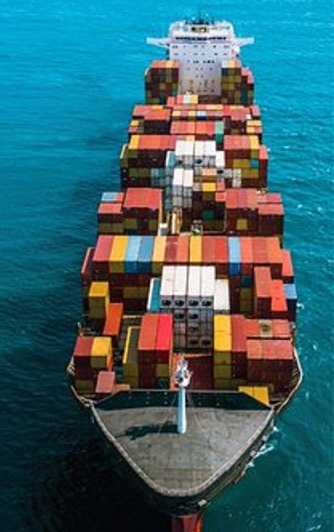
R. Suryamurthy
As the United States ramps up its global tariff campaign under President Donald Trump, Beijing has issued a sharp warning to countries aligning with Washington at the expense of Chinese interests. In a strongly worded statement, the Chinese Ministry of Commerce said it would retaliate against any such move, signalling the widening impact of the U.S.-China trade war beyond the two superpowers.
The warning, which came as the U.S. threatens tariffs of up to 145% on Chinese imports and pressures allies to limit ties with Beijing, is a clear message: neutrality may no longer be an option in the world’s most consequential economic confrontation.
At the heart of this geopolitical contest is a recalibration of global trade. Washington is reportedly using tariff negotiations to draw partner countries into its orbit by penalising trade with China, a tactic that Beijing has branded “unilateral bullying.” China has responded with steep duties of its own—up to 125% on U.S. goods—while restricting exports of critical minerals and blacklisting several American firms.
The implications are global. “China’s warning must be viewed through the lens of supply chain interdependence,” says Ajay Srivastava of the Global Trade Research Initiative (GTRI). “Despite talk of decoupling, global economies still rely heavily on China not just for finished goods, but for intermediate and component-level supplies.” He points to the embedded role of China across Tier 1, Tier 2, and Tier 3 levels of global production, which few countries can fully replace in the near term.
India now finds itself in a complex balancing act. The arrival of U.S. Vice-President JD Vance in New Delhi, accompanied by his family for a high-profile diplomatic and cultural visit, underscores Washington’s urgency in fast-tracking a trade pact with India. Bilateral trade surpassed $190 billion last year, and both sides are working to finalise the first tranche of a broader deal during the current 90-day tariff pause announced by Trump.
Finance Minister Nirmala Sitharaman, currently in the U.S. for IMF and World Bank meetings, has said India hopes to “positively conclude” the initial phase of the pact by autumn. This comes amid internal challenges including farmer protests and external uncertainty over the U.S.’s long-term trade posture.
But experts warn that India must not allow itself to be drawn into binary rivalries. “India must chart an independent course—strengthening domestic manufacturing while maintaining strategic autonomy,” Srivastava argues. “That means engaging both the U.S. and China on equal terms, guided by economic pragmatism and WTO rules.”
This view is echoed in recent academic work from Himanshu Jaiswal and A. Ganesh-Kumar at the Indira Gandhi Institute of Development Research. Using a global computable general equilibrium (CGE) model, they found that the trade war—if sustained—could reduce global GDP by as much as 14%, with nearly all countries experiencing economic losses. Notably, their findings suggest India could be a rare gainer, thanks to increased external demand and opportunities in sectors like light manufacturing and textiles.
However, the gains are not universal. India risks setbacks in pharmaceuticals, processed foods, and energy products unless it undertakes bold reforms. Jaiswal and Ganesh-Kumar recommend that India pursue a significant tariff cut to drive job creation and GDP growth, rather than retaliate or get caught in crossfire.
As China deepens trade with Southeast Asia and President Xi Jinping courts support in Vietnam, Malaysia and Cambodia, the contours of a new regional trade order are emerging—one shaped not by alliances, but by resilience and optionality.
For India, the path forward lies not in choosing sides, but in choosing strategy.
